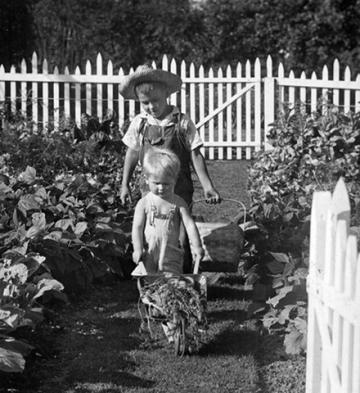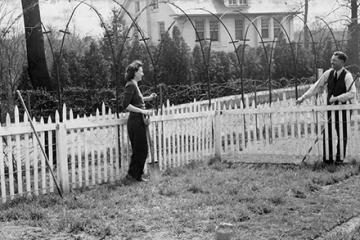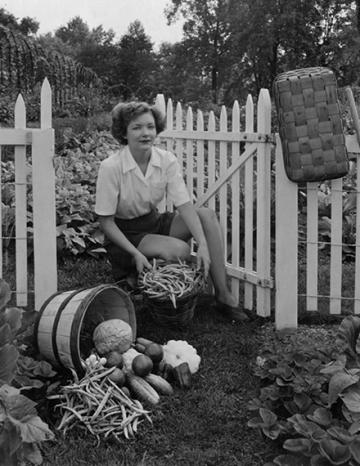Time for Victory Gardens Again?

Victory Gardens involved the whole family, July 1942. (J. Horace McFarland Papers, Special Collections, USDA National Agricultural Library, D4371-1)
Springtime 2020, a time that many of us will never forget. Our nation is battling a global pandemic, and most Americans are being directed to shelter at home to help slow the spread of the virus. People are searching for ways to stay occupied, care for their families and themselves, and do their part to help our country get through this crisis. The good news: There’s a time-honored way to do all those things, and during World War II it was a vital lifeline for people everywhere: Plant a Victory Garden!
The National Agricultural Library (NAL), part of the Agricultural Research Service, has a fascinating online exhibit about the U.S. Victory Garden program, which was initiated shortly after the attack on Pearl Harbor in 1941, when our nation entered into World War II. While maintaining an adequate domestic food supply during wartime was a primary goal of the program, another goal was to: “Maintain and improve the morale and spiritual well-being of the individual, family, and Nation. The beautification of the home and community by gardening provides healthful physical exercise, recreation, definite release from war stress and strain,” according to one of the many pamphlets produced by USDA to help families and communities succeed with their gardens.

Neighbors discuss plans for their Victory Gardens, April 1943. (J. Horace McFarland Papers, Special Collections, USDA National Agricultural Library, D4372-1)
Americans answered the call in a big way. According to archived USDA fact sheets, there were more than 20 million victory gardens in 1943, which produced 10 billion pounds of food. In 1944, gardens provided around 40 percent of the U.S. vegetable supply. Tomatoes led the list in popularity, followed by string or wax beans, onions, lettuce, radishes, beets, and carrots. Two-thirds of the gardens were in towns, cities, and suburban areas.
Today, as our nation once again binds together to fight a common enemy, planting Victory Gardens can offer the same benefits as it did nearly 80 years ago. Even without a yard or community plot, you can still grow cherry tomatoes, peppers, leafy greens, and other vegetables in pots on your balcony, or perhaps a selection of herbs in a sunny window. You can also try hydroponics—growing veggies in a soilless nutrient solution. Use your creativity and have fun with it!

Harvesting vegetables from a Victory Garden, July 1944. (J. Horace McFarland Papers, Special Collections, USDA National Agricultural Library, D4371-1)
Gardening instructions and tips can easily be found on the Internet. Your local Cooperative Extension Service is also a good source of information. Or you can go back in time and peruse NAL’s Victory Garden online exhibit. NAL also has collections of publications, seed catalogs, and posters that document this period in our nation’s history. Take a moment to browse through and learn how Americans rose to the challenge of keeping everyone fed during wartime. It may inspire you to grow your own Victory Garden.
For more information, contact NAL, either through the Ask-a-Question page or via email. Be sure to check out NAL’s other on-line exhibits, too!—By Sue Kendall, ARS Office of Communications.
You May Also Like

